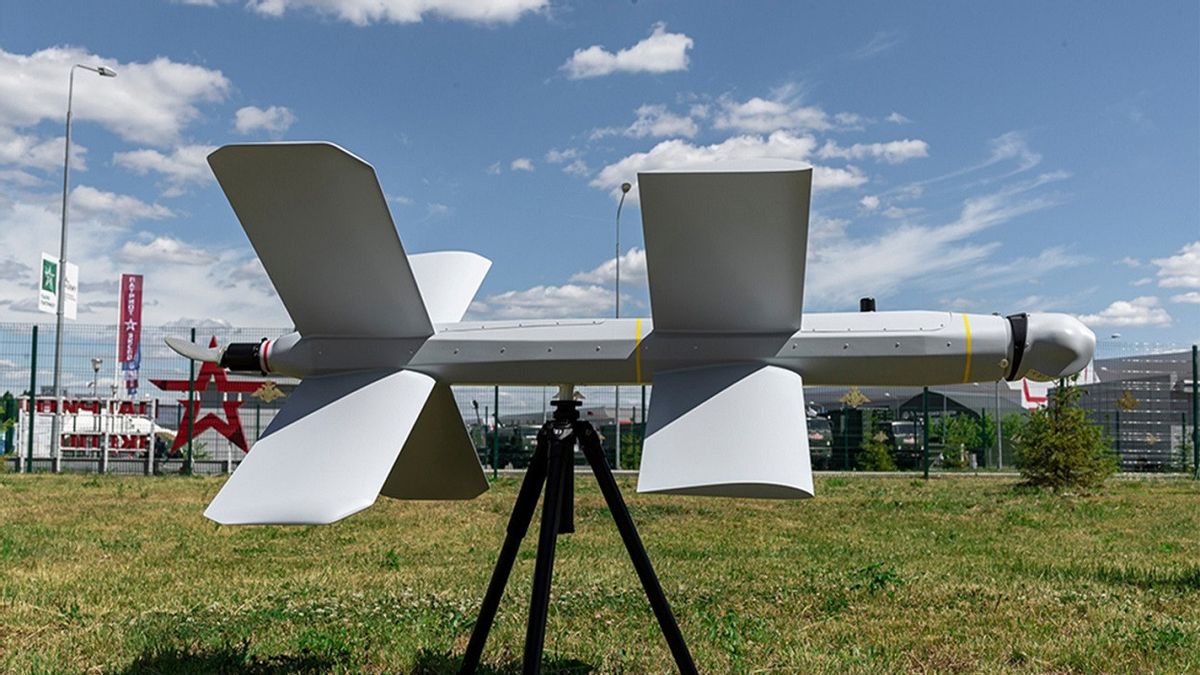Ukraine has requested more air defense systems and ammunition from its partners after Russia increased the use of “kamikaze drones” in its ruthless attack on the nation. While Iranian-supplied drones have hogged the limelight, Russia’s Lancet kamikaze is also grabbing the limelight.
With $100M In ‘Kitty’, Philippines Could Now Dump Russian Mi-17 Helicopters For US Chinook Choppers?
S.Korea’s ‘Defective List’ Swells; After US-Origin F-35 Stealth Fighters, Seoul Unhappy With German Submarines
The Ministry of Defense recently released a video of Lancet kamikaze drones being used against the Ukrainian troops. In the high-power video shot by the Lancet drone itself, a Ukrainian vehicle could be seen being destroyed by the Kalashnikov Concern kamikaze UAV, Russian local media Pravda reported.
The video captures the drone’s homing head as it approaches what appears to be an SUV or Truck with missiles parked by the side of the road, and the kamikaze drone strikes the vehicle.
The Defense Ministry has now publicly released a video demonstrating the usage of the Lancet drone in the first such instance.
https://www.youtube.com/watch?v=Bp-fiTxgiIg
Igor Konashenkov, the official spokesperson for the Russian Ministry of Defense, also claimed that about 12 Ukrainian drones and two fighter jets, including the Su-27 and MiG-29 aircraft, were destroyed by the Russian military over the previous day in the Poltava and Dnipropetrovsk districts.
In a separate video, the Lancet kamikaze drone could be seen taking out what appears to be a Buk-M1 SAM TELAR. While the video caught the internet by storm, a Ukrainian social media account named ‘Ukraine Weapons Tracker’ said that the Russian forces claimed to take out the Ukrainian Buk-M1 SAM TELAR using the ZALA Lancet kamikaze drone.
It was a decoy and not an actual system that the drone struck. EurAsian Times could not independently verify either claim.
#Ukraine: Russian forces claimed to take out a Ukrainian Buk-M1 SAM TELAR using a ZALA Lancet loitering munition….but actually destroyed an obvious decoy. pic.twitter.com/XEbtLPQikK
— 🇺🇦 Ukraine Weapons Tracker (@UAWeapons) October 14, 2022
The use of the Lancet drone and the subsequent videos surfaced on the internet when Moscow launched an intense bombardment of Ukraine, igniting a discussion about its operational capability.
Internet weapon trackers and military enthusiasts debated that the Lancet drone was much better than the expendable and cost-effective Shahed-136 that the Russian troops have overwhelmingly deployed.
However, Lancet carried a much weaker warhead than the Shahed-136. The Lancet drones have rampaged against Ukrainian military equipment and command centers.
https://twitter.com/sbobkov/status/1580612751923085313?s=20&t=mbpw2HQsY4_-q5XL4x8GsA
In July this year, Russia first released footage from the video feed of its Zala Lancet-3 loitering munition Kamikaze drones flying into Ukrainian targets in what appears to be the first direct camera footage from such UAVs.
The video showed two feed instances from the kamikaze drones’ front electro-optical device. Both cases had a standard modus operandi whereby they first observed their targets from a distance and then rapidly homed in.
Russia’s Homegrown Drones
Unmanned aerial vehicles (UAVs) Lancet-1 and Lancet-3 are loitering drones that weigh only 12 kilograms. They can conduct aerial surveillance and attack the located target with electrifying speed. Such kamikaze drones can hover in the air while waiting for the right time to strike.
The two models of the Lancet Kamikaze drones- Lancet 1 and Lancet 3 have different flying times and warhead payload capacities.
The Russian Lancet-3, for one, is a lightweight loitering munition produced by ZALA and Kalashnikov with a three-kilogram warhead and a 40-minute endurance. It is a progression of the flying-wing KYB Kub (Cube) loitering munition, which underwent military testing in Syria in 2019.

The Lancet-3 is launched using a rail-mounted catapult device and has a takeoff weight of 12 kilograms. It can be folded into a carrier trunk and has two sets of X-shaped wings. A video shows the Lancet-3 tested in Syria against the terrorist organization Hayat Tahrir al-Sham (HTS).
The first evidence of the system’s use in Ukraine came from a picture of a crashed Lancet-3 that circulated on Ukrainian networks on July 16 and claimed it had been fired upon by Ukrainian Armed Forces (UAF) personnel in the Zaporizhzhia area.
The Lancets have now made it to the battlefield in large numbers as the war in Ukraine is being dominated by armed kamikaze drones. Ukraine claimed on October 12 that it had shot down two ZALA Lancet drones, besides many Iranian-origin Shahed-136 kamikaze drones.
After a high-level meeting held against the backdrop of the Russian aerial attack, Gen. Mark Milley, chairman of the US Joint Chiefs of Staff, told reporters that the US and its allies needed to give Ukraine air defense systems so that it could defend its airspace against incoming attacks from Russian forces.
- Contact the author at sakshi.tiwari9555@gmail.com
- Follow EurAsian Times on Google News